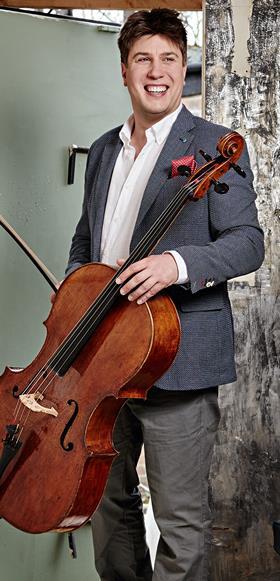Cellist Thomas Carroll shares his experience of working with composer Cheryl Frances-Hoad on her new work for solo cello, Excelsus

Bringing a piece to life is our primary role as performers; a journey that is always extremely exciting but one which is simultaneously filled with many questions and uncertainties.
Making a piece ’our own’ is of course the only way to be truly free as a performer, but where do we begin when we start to learn a new piece? What is the best way to understand a composer’s language and to fully connect with their music?
The internet of course gives us incredible resources on composers and their lives, with limitless biographies, diaries, letters, wonderful documentaries and more, not to mention endless recordings available at our fingertips. And not forgetting the score itself! Clearly the most important of all resources.
Nevertheless, there always remain so many questions that I would love to have the chance to ask the composer.
One example that springs to mind is Schumann’s Cello Concerto, where in the first movement he writes ’not too fast’, but simultaneously puts a metronome mark which is so fast that no cellist even gets close to it. There are certainly many clues to this particular piece of writing found when learning about his own passionate personality, often penning his works in an outburst of creative genius. But still, wouldn’t it be amazing to hear his reasoning, and to hear him describe what it is that he is trying so intensely to communicate?
This is perhaps the primary reason I enjoy working with contemporary composers, combined of course with the somewhat ego-centric excitement of being the one to bring a new work to life - the chance to ask these questions.
Working with Cheryl Frances-Hoad on her solo cello piece, Excelsus, was no exception. Understanding the dramatic content of the seven movements genuinely helped overcome my initial worries, as it has to be the hardest piece I have ever played (nudging Schoenberg’s Cello Concerto into a comfortable second place!)
Cheryl wrote vivid instructions such as ’striking, bold beginning, chords which all suggest gold and red colours…’ and ’an outpouring of emotion - like someone singing and bearing their soul…proclaiming to God - to try and make God hear them…’
Working through the piece with the aid of these words, and the chance to understand and discuss with Cheryl the core of her musical message, helped overcome the numerous technical challenges of double, triple and even quadruple stops, as well as the huge leaps around the instrument. Embracing the music in this expressive way and getting to the core of its message transformed my ability to play it.
The stratospheric high point of this journey is the fifth movement, the Dies Irae, which takes the cello to its absolute limit, way off the fingerboard. Her marking ’fff con somma passione disperazione’ (Incredibly loud, with utmost passion and despair), is somehow very fitting.
Excelsus is beautifully formed and structured. The high-octane drama of the Dies Irae leads us directly into the penultimate movement, Agnus Dei, ’a very calm, beautiful movement inspired by the image of the Lamb of God…’
After all the preceding intensity the calm and soothing nature of this movement is very welcome, and again, embracing the words of the composer, and her descriptions to me of the atmosphere she intended, made it technically much more attainable.
The piece ends with Quid Sum Miser, ’some sort of catharsis at the end - even though that final d doesn’t resolve to a major, the cellist hopefully achieves some sort of peace at the end…’
Cheryl encouraged me to really let the music die away and not to worry if the notes only barely spoke. Words such as ’sospirando’, ’piangendo e dolce’ and ’morendo’ are written on the page to describe what she is looking for (sighing, crying and dying away). The piece finishes with one last breath ’a niente’, (to nothing) and we are left emotionally spent, after a heart-wrenching 15 minutes of music.
Excelsus for Solo Cello is out now on Orchid Classics
Read: Collaborating with a contemporary composer
Read: Postcard from Huddersfield Contemporary Music Festival: Subversion in sound











































No comments yet